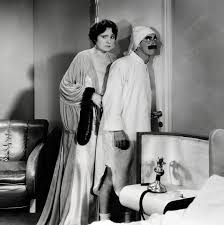The idea of peace on earth good will towards men is lost on the masses standing in the one and only opened security checkpoint line at Sky Harbor Airport. It certainly isn’t a sentiment that springs to my mind standing behind the family of eight who wait until they reach the X-ray scanner to remove their jackets, shoes, laptops, cell phones, jewelry, and the case of hot sauce they purchased from a street vendor in Winslow stuffed in their pockets.
I’m not struck with confidence by the crack security people manning the perimeter. The ones who insist that a mother remove the socks from her infant’s feet because there is a sneaker pattern crocheted into the design. Yeah… We all know that’s how every bad guy operates, right? It isn’t some religious fanatic with an ax to grind sneaking onboard with something vile. It’s a young mother who dared to put cute socks on her baby with a whimsical design.
Flying in this country has turned into an amazingly arduous process, especially boarding he plane, which has now become this tedious Bataan death march with American Tourister overnight bags. I always get stuck behind this one guy, who takes forever to get situated. He’s clogging the aisle like a piece of human cholesterol jammed in the passengerial artery. You just want to get that soft drink cart and flush his behind out the back door. He’s folding that sport jacket like he’s in the color guard at Arlington National Cemetery.
Or else I get stuck behind a wizard who wants to beat the system by gaffer-taping a twine handle onto a refrigerator-freezer box and calling it “carry on.” Wedging it into the overhead with hydraulic jacks.
And exactly when did flight attendants in this country get so cranky? If they enforce their own rules perhaps things would go a bit smoother for themselves and the passengers who do follow their mandates. I know it’s a tough job. There’s got to be a thousand different ways to tie that neckerchief but why take it out on me? You know the worst thing about it is they don’t even come clean with you and tell you how much they hate you. They treat you with a highly contrived air of mock civility, that tight, pursed-lip grin where they nod agreement with everything you say. You know right behind that face plate they barely tolerate your very existence.
I’d rather they just come out in the open and say, “Hey, listen, jerk. When I was eighteen years old, I made a horrible vocational error, all right? I turned my entire adult life in for cheap airfare to Barbados. Now I’ve got hair with the tensile strength of Elsa Lanchester in Bride of Frankenstein. I haven’t met Mr. Right. I’m a waitress in a bad restaurant at thirty thousand feet.
What about when you leave the plane and they’ve got them propped by the front door in that complete android catatonic stupor where they look like the Yul Brynner robot from Westworld when he blew a headpipe. “Bye. Bye. Bye, Bye.” Part of this is the airline I used. It rhymes with Southwest. Their motto is, “Hey, you know we aren’t good at our job and you decided to fly with us anyway. So, some of this is on you.”
You know who I feel sorry for in the whole air-travel scenario? It’s the poor person who has to drive the jetway. You know the little accordion tentacle that weaves its way out to meet the plane? Everybody else is Waldo Pepperin’ around in their leather jackets, the right stuff coursing through their veins as they push the outside of the envelope. Their job is to drive the building.
I’m going to start the new year out right and NOT fly anywhere. I’ll be home resolving to make better bad decisions.












